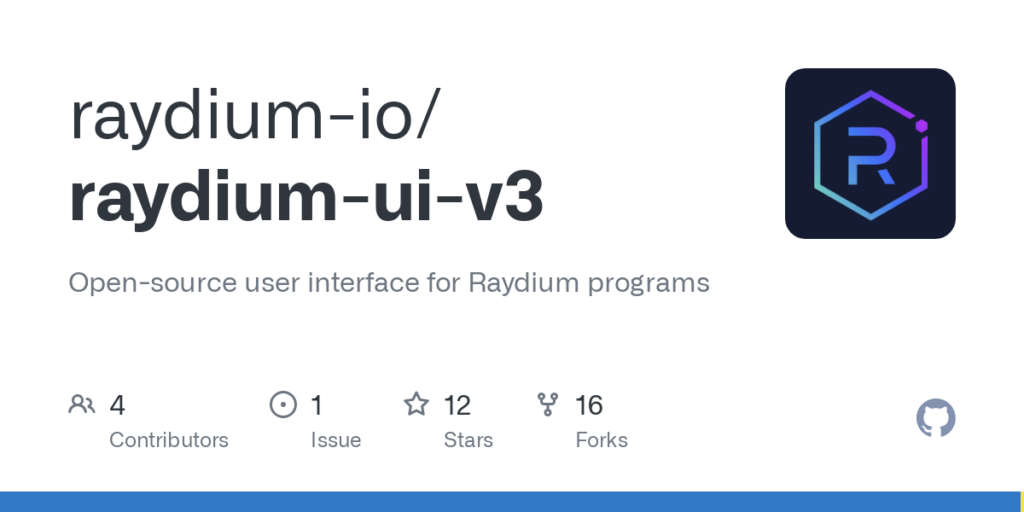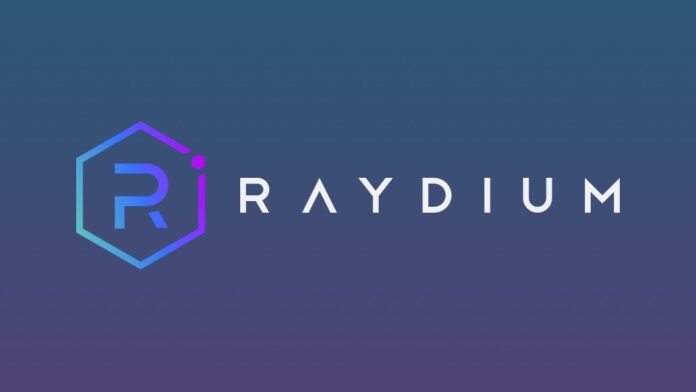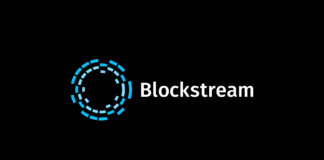The cryptocurrency landscape has witnessed remarkable growth, with decentralized finance (DeFi) protocols leading the charge. Among these innovative platforms, Raydium swap has emerged as a significant player in the Solana ecosystem. This automated market maker (AMM) and decentralized exchange (DEX) has gained traction for its unique features, including integrated liquidity pools and yield farming opportunities.
Raydium’s ecosystem offers a comprehensive suite of DeFi products, catering to both novice and experienced traders. From its user-friendly swap interface to advanced trading tools like limit orders, Raydium app aims to make swapping tokens accessible and efficient. This article will delve into the key aspects of Raydium crypto, exploring its role in the DeFi space, its core products, and the security measures in place to protect users. Additionally, it will shed light on the RAY token, Raydium’s governance token, and how it fits into the broader picture of the platform’s ecosystem.
The Evolution of DeFi and Raydium’s Role
Challenges in Traditional DeFi
The world of decentralized finance (DeFi) has witnessed remarkable growth, with Ethereum leading the charge as a groundbreaking platform. Ethereum has hosted some of the most innovative protocols, including Aave, Compound, and Gearbox. However, as Ethereum’s popularity soared, it began to face significant limitations
These challenges included high gas fees, slow transaction speeds, and scalability issues. These problems have hindered the widespread adoption of DeFi and limited its potential to revolutionize the financial sector The distributed ledger technology at the heart of cryptocurrency and DeFi has the potential to change the architecture of our existing financial infrastructure
Despite its promise of democratizing access, it’s “quite naive to believe” that DeFi will automatically level the playing field. Financial markets are inherently prone to economies of scale and scope, as well as large network externalities. These forces create pressures for concentration even if there is free market entry
For example, given the importance of liquidity for exchanges, traders will always try to execute their orders on the deepest and most liquid exchange. This gives the exchange the power to charge high fees. “We start seeing the same dynamic in DeFi markets. Dominant exchanges charge high fees and try to protect their dominant position in the market,”
Related Read: In Depth Analysis: Supra Oracles, An Emerging Cross Chain DEX and Oracle Network
Solana’s Solution
The challenges faced by Ethereum have spurred the rise of alternative ecosystems like Solana, which offers low fees, fast transactions, and scalability Solana was designed to handle high throughput with fast transaction speeds. It uses a unique consensus mechanism called Proof of History (PoH) in combination with Proof of Stake (PoS) to achieve this
One of Solana’s main selling points is its scalability. By utilizing a combination of innovative technologies, Solana claims to be able to support thousands of transactions per second (TPS) This has made Solana an attractive platform for DeFi projects and users seeking faster and more cost-effective alternatives.
However, Solana has faced its own challenges. Over the past three months, the number of active wallets has increased from 411,582 in January to 922,611 in March, a growth of 224% While this indicates a clear trend towards expanding the consumer base of platform services, it has also led to problems with network throughput.
These issues have resulted in a shortage of space in blocks and, consequently, an increase in transaction costs. For reference, in November 2023, the transaction fee was USD 0.00, while in March 2024 this value skyrocketed to USD 0.03, representing a growth of more than 4000% in half a year
Raydium’s Innovative Approach
Raydium dex has emerged as a leading decentralized exchange (DEX) within the Solana ecosystem, revolutionizing the way users trade and interact with DeFi protocols Raydium solana is built on the Solana blockchain, offering users a fast, low-cost, and secure platform for trading and interacting with various tokens
Raydium utilizes an Automated Market Maker (AMM) model, which enables users to swap tokens directly from their Raydium wallet without the need for intermediaries This approach, combined with Solana’s high throughput and low transaction fees, makes Raydium an attractive option for users seeking to trade and interact with DeFi protocols without the burden of excessive transaction costs
One of Raydium’s key features is its liquidity pools, which allow users to provide liquidity to the platform and earn rewards in the form of fees and yield farming incentives This has significantly improved the accessibility of DeFi for users by offering a user-friendly and cost-effective platform
Raydium’s success has contributed to the overall growth and adoption of the Solana blockchain ecosystem. As users engage with Raydium, they become more familiar with the advantages of the Solana blockchain, leading to increased usage and adoption of Solana-based projects and decentralized applications (dApps)
The platform’s native token, RAY, serves multiple roles within the Raydium ecosystem, including governance, staking, and participation in liquidity pools Token holders have the opportunity to stake their RAY tokens, engaging in the governance of the platform. This Raydium staking mechanism allows them to earn rewards and participate in decision-making processes about platform updates and changes
Raydium’s innovative approach and its role in the Solana ecosystem have positioned it as a significant player in the evolving landscape of decentralized finance. As DeFi continues to grow and adapt, platforms like Raydium are likely to play a crucial role in shaping the future of financial services.
Raydium’s Ecosystem and Products
Raydium, an automated market maker (AMM) platform built on the Solana blockchain, offers a comprehensive suite of decentralized finance (DeFi) products and services. Launched in February 2021, Raydium has quickly established itself as a leading player in the Solana ecosystem, providing users with a range of innovative features and opportunities
Trading Platform
At the core of Raydium’s ecosystem is its trading platform, which utilizes a unique approach to liquidity provision. Unlike traditional AMMs, Raydium’s platform integrates with OpenBook’s central limit on-chain order book, allowing users and liquidity pools to access the order flow and liquidity of the entire OpenBook ecosystem This integration enhances liquidity and potentially improves trading conditions for users.
Raydium’s Best Price Swaps feature is designed to optimize trading outcomes for users. This feature automatically determines whether swapping within a liquidity pool or through the OpenBook order book will provide the best price, ensuring users get the most favorable rates for their trades It takes into account factors like slippage tolerance and price impact to make this determination.
The platform charges a fee ranging from 0.01% to 1% for swaps, depending on the specific pool used. In AMM pools, 88% of this fee is redeposited into the liquidity pool as a reward for liquidity providers, while 12% is used to buy back the RAY token. For CLMM pools, the distribution is slightly different, with 84% going to liquidity providers, 12% for RAY token buybacks, and 4% allocated to the protocol treasury
Liquidity Pools
Raydium’s liquidity pools are a cornerstone of its ecosystem, allowing users to deposit token pairs and earn rewards. When users provide liquidity, they receive LP (liquidity provider) tokens representing their share of the pool. These tokens entitle them to a portion of the trading fees generated by the pool.
The platform offers two types of liquidity pools:
- Traditional AMM Pools: These pools operate on a constant product model, where liquidity is spread across all price ranges.
- Concentrated Liquidity Market Maker (CLMM) Pools: These advanced pools allow liquidity providers to concentrate their assets within specific price ranges, potentially increasing capital efficiency and yields.
Liquidity providers in both types of pools earn from trading fees. In traditional AMM pools, 0.22% of each trade goes back to the LP pool, while 0.03% is allocated to RAY staking.
Yield Farming
Raydium offers various yield farming opportunities, allowing users to earn additional tokens beyond trading fees. The platform features several types of farms:
- Raydium Farms: These pools enable liquidity providers to generate RAY tokens in addition to trading fees.
- Fusion Pools: These liquidity pools allow users to earn tokens from supported projects alongside trading fees. Some fusion pools offer dual yield, where users can earn both RAY and project tokens.
- Ecosystem Farms: These permissionless farms allow any project team or user to create a farm and bootstrap liquidity by offering reward emissions on any pool.
IDO Launchpad
Raydium’s AcceleRaytor serves as an Initial DEX Offering (IDO) launchpad, driving growth within the Solana ecosystem. This feature allows innovative projects to raise capital and generate initial liquidity. AcceleRaytor provides a platform for new projects to launch their tokens and gain exposure to Raydium’s user base.
In addition to these core features, Raydium also offers staking opportunities for its native RAY token. RAY token holders can stake their tokens to participate in governance decisions and earn rewards. The platform also includes a Dropzone feature for NFT launches and an NFT marketplace powered by Magic Eden, further expanding its offerings in the decentralized finance space.
Security and User Experience on Raydium
Platform Security Measures
Raydium, as a decentralized finance (DeFi) platform, places a strong emphasis on security to protect user funds and maintain trust. The evolving nature of the DeFi space necessitates ongoing security measures. To address potential vulnerabilities, Raydium conducts regular security audits and implements proactive measures to safeguard user assets.
The platform operates on the Solana blockchain, which has gained recognition for its robust security features. Solana’s high-speed transaction processing, with capabilities of up to 65,000 transactions per second and 400ms block times, contributes to the overall security of the Raydium protocol. This rapid processing helps to minimize the window of opportunity for potential attacks.
It’s important to note that while Raydium provides the interface, the Raydium Holding Foundation does not own or control the Raydium Protocol or the transactions conducted on it. Users interact with the platform at their own risk, and the interface is provided “as is” without warranties. This decentralized approach aligns with the principles of DeFi but also emphasizes the importance of user vigilance.
User Interface and Accessibility
Raydium’s user interface has been designed with a focus on simplicity and functionality, making it accessible to both experienced traders and newcomers to the DeFi space. The straightforward design contributes to the platform’s ease of use, providing an intuitive experience for users navigating the various features.
The recent launch of Raydium V3 has brought significant improvements to the user interface. One notable addition is the option to choose between the original Raydium Dark theme and a new Light theme, allowing users to customize their visual experience. Furthermore, all user settings and customization options, previously scattered across different windows, have been consolidated in the top right corner of the screen for easier access.
To enhance accessibility, Raydium now offers language packages, allowing users to interact with the platform in their preferred language. This feature, along with the color theme options, has been added to the user customization settings, further improving the overall user experience.
Mobile Compatibility

Recognizing the growing trend of mobile usage in the crypto space, Raydium has taken steps to ensure compatibility with mobile devices. The platform can be accessed from mobile browsers, allowing users to connect their wallets and interact with the protocol on the go. The Raydium team has been working on developing a more mobile-friendly version of the platform to further enhance the user experience on smartphones and tablets.
Raydium V3 has been specifically optimized for mobile users, ensuring a smoother experience when using different wallet apps on mobile devices. This optimization is crucial for users who prefer to manage their DeFi activities on the go.
To get started with Raydium, users need a Solana Program Library (SPL) wallet for storing funds and interacting with the Raydium Protocol. The platform supports various wallets, including popular options like Phantom, Solflare, and Backpack. Phantom, in particular, is recommended for new users due to its streamlined, user-friendly interface available as both a browser extension and a mobile app.
For mobile users, both Phantom and Solflare offer wallet applications available on iOS and Android platforms. These mobile wallets allow users to import their existing wallets using a 12 or 24-word seed phrase, providing seamless access to their funds across devices.
It’s worth noting that users are advised to maintain a minimum balance of 0.05 SOL in their wallets to avoid failed transactions, as SOL is required to execute transactions on the Solana network. This small detail contributes to a smoother user experience by preventing unexpected transaction failures.
Conclusion
Raydium has emerged as a game-changer in the DeFi space, offering a comprehensive suite of products on the Solana blockchain. Its innovative approach to liquidity provision, combined with features like yield farming and the IDO launchpad, has a significant impact on the accessibility and efficiency of decentralized finance. The platform’s focus on security and user experience, including mobile compatibility and multi-language support, demonstrates its commitment to meet the evolving needs of the crypto community.
As the DeFi landscape continues to evolve, Raydium’s role in shaping the future of decentralized finance becomes increasingly important. The platform’s ability to adapt and innovate, as seen in the recent launch of Raydium V3, positions it well to address ongoing challenges in the industry. With its user-friendly interface and robust ecosystem, Raydium is poised to continue its growth and contribute to the wider adoption of DeFi technologies.
FAQs on Raydium Network
Can Raydium be used legally in the United States?
No, the Raydium protocol is not accessible to residents of several countries, including the United States, Belarus, and Iran.
What fees does Raydium impose for token swaps?
Raydium charges a 0.25% fee for each swap transaction within its pool, such as between $RAY and $USDC. Out of this fee, 0.22% is returned to the liquidity pool, and 0.03% is used for RAY buybacks.
How does trading function on the Raydium platform?
Raydium facilitates trading by using the Serum DEX’s central order book. This allows users to engage with an on-chain order book that is shared among over 30 exchanges, offering a comprehensive view and interaction capabilities with the market.
Is Raydium considered a secure trading platform?
Yes, Raydium is regarded as secure because it allows users to retain full custody of their assets in their own crypto wallets. The platform only processes transactions, making it less appealing to potential hackers since it does not hold user assets collectively.













